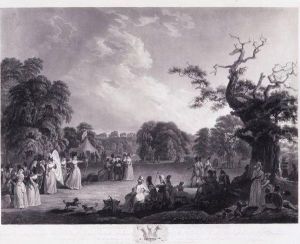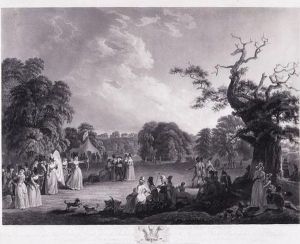John Emes Paintings
John Emes was an English silversmith and entrepreneur, recognized for his craftsmanship and contribution to the silver industry during the late 18th and early 19th centuries. Born in 1762, Emes began his career as an apprentice under the renowned silversmith William Bateman I, a significant figure in the world of Georgian silver. It was within this environment that Emes honed his skills and became well-versed in the art of silversmithing.
After completing his apprenticeship, Emes took over the business of another prominent silversmith, Robert Garrard I, in 1796. This business was located at Panton Street in London, a hub for silversmiths of the time. Under Emes's leadership, the workshop gained a reputation for producing high-quality silverware, often characterized by elegant designs and excellent craftsmanship that catered to the tastes of the Georgian elite.
Emes didn't limit his scope to creating traditional silver pieces. He also ventured into designing and manufacturing larger and more elaborate works such as presentation silver, centerpieces, and candelabra. His works often reflected the neoclassical style, which was popular during that era, and featured motifs such as fluting, laurel wreaths, and acanthus leaves. These stylistic choices aligned Emes’s creations with the prevailing tastes of the time, making them highly sought after by patrons who desired to showcase their wealth and sophistication through the possession of such luxurious items.
John Emes's contribution to the field of silversmithing also includes his partnership with Rebecca Emes, following the death of her husband, William Emes. Together, they continued to maintain the business's reputation for quality and elegance. Although Rebecca was not a silversmith, her involvement in the business was significant, and she played a crucial role in its operations.
Unfortunately, John Emes's life and career were cut short when he died in 1810. Despite his relatively brief period of activity, his impact on the silver industry was substantial. Today, his work is recognized for its fine quality and craftsmanship, and pieces created by Emes are considered highly collectible. They can be found in museums, private collections, and occasionally appear at auction, where they are valued for their historical significance and beauty.




